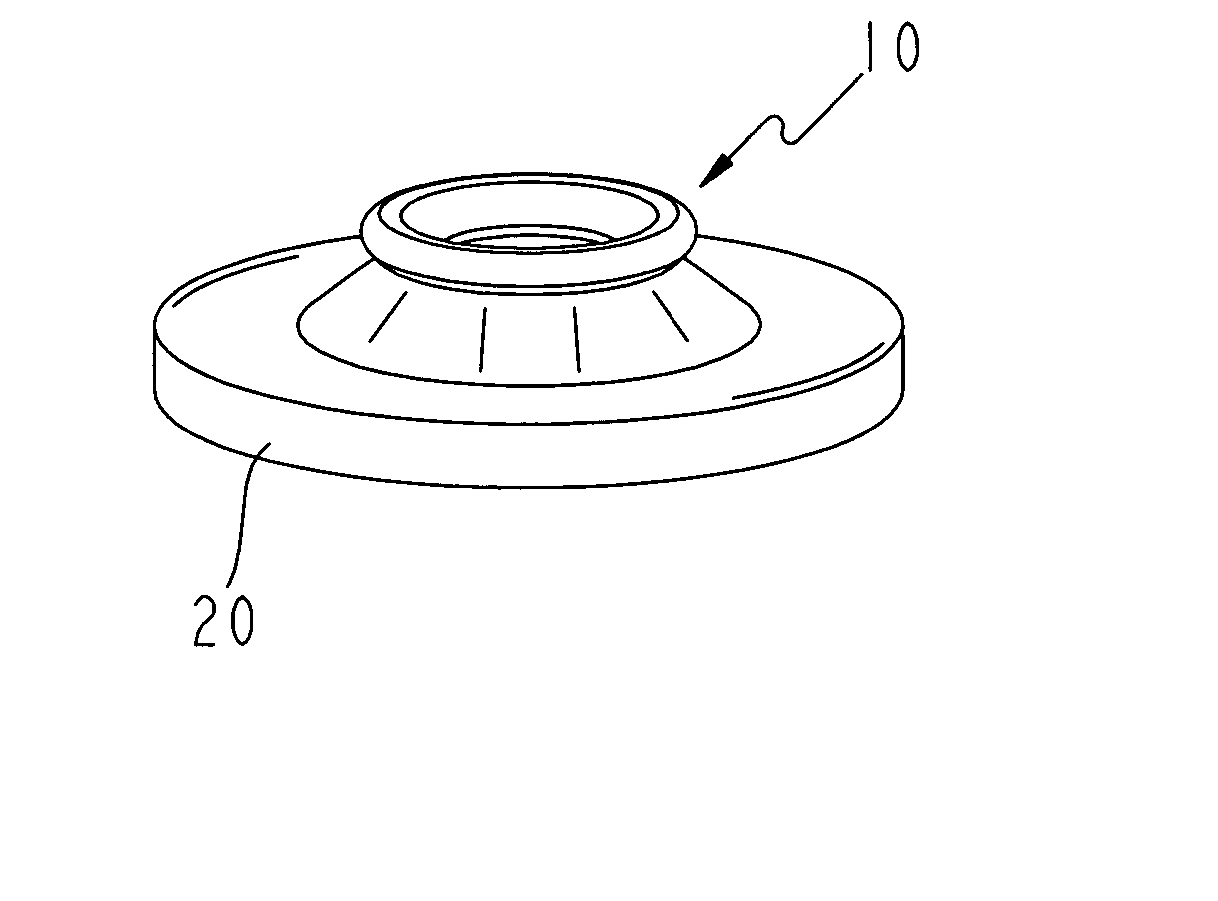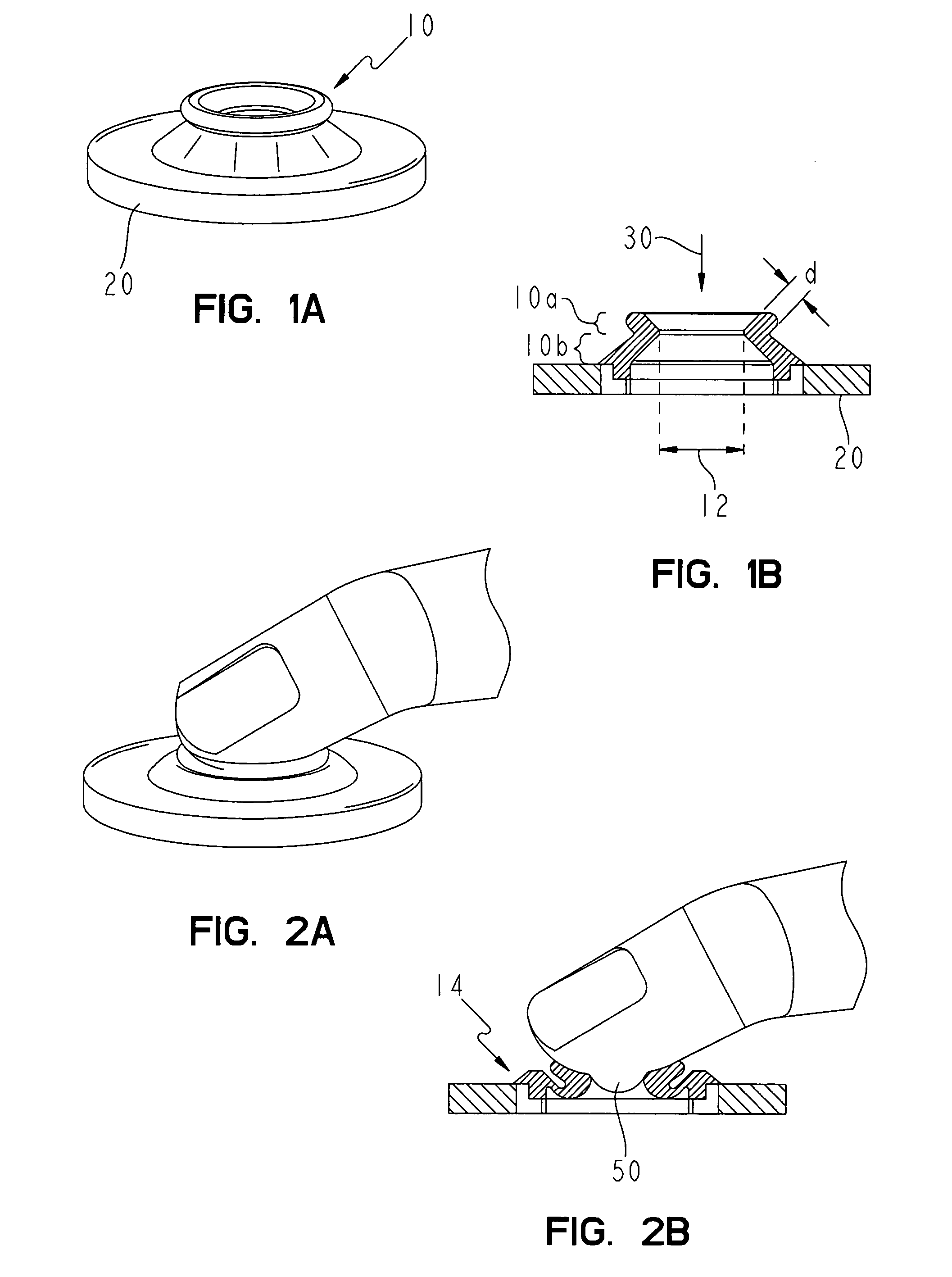System for withdrawing body fluid
a body fluid and system technology, applied in the field of system for withdrawing body fluid, can solve the problems of patient's death, long-term side effects, major scarring on the sensitive finger tips, etc., and achieve the effects of less curved, easy adaptation, and increased internal pressur
- Summary
- Abstract
- Description
- Claims
- Application Information
AI Technical Summary
Benefits of technology
Problems solved by technology
Method used
Image
Examples
Embodiment Construction
[0033]FIG. 1 shows a first embodiment of a deformable compression unit. FIG. 1A shows a perspective diagram of the compression unit (10) which is mounted on a plate (20). The cross-sectional diagram of FIG. 1B shows that the compression unit has two conically tapering regions (10a, 10b) which act as a pressure-application region. The upper pressure-application region (10a) narrows towards the plate (20) and the directly adjoining lower region (10b) widens towards the plate. The compression unit is constructed of a deformable plastic which is polyurethane in the example shown. Silicon and rubber can also be used. It is important that the compression unit can be deformed with sufficient ease as well as being adequately rigid in order to generate the necessary counter-pressure and an adequate pressure in the transverse direction. Suitable materials are in particular those with a hardness of less than 90 Shore preferably less than 50 Shore and particularly preferably in the range of 20 ...
PUM
| Property | Measurement | Unit |
|---|---|---|
| inner width | aaaaa | aaaaa |
| compressive force | aaaaa | aaaaa |
| compressive forces | aaaaa | aaaaa |
Abstract
Description
Claims
Application Information
 Login to View More
Login to View More - R&D
- Intellectual Property
- Life Sciences
- Materials
- Tech Scout
- Unparalleled Data Quality
- Higher Quality Content
- 60% Fewer Hallucinations
Browse by: Latest US Patents, China's latest patents, Technical Efficacy Thesaurus, Application Domain, Technology Topic, Popular Technical Reports.
© 2025 PatSnap. All rights reserved.Legal|Privacy policy|Modern Slavery Act Transparency Statement|Sitemap|About US| Contact US: help@patsnap.com



